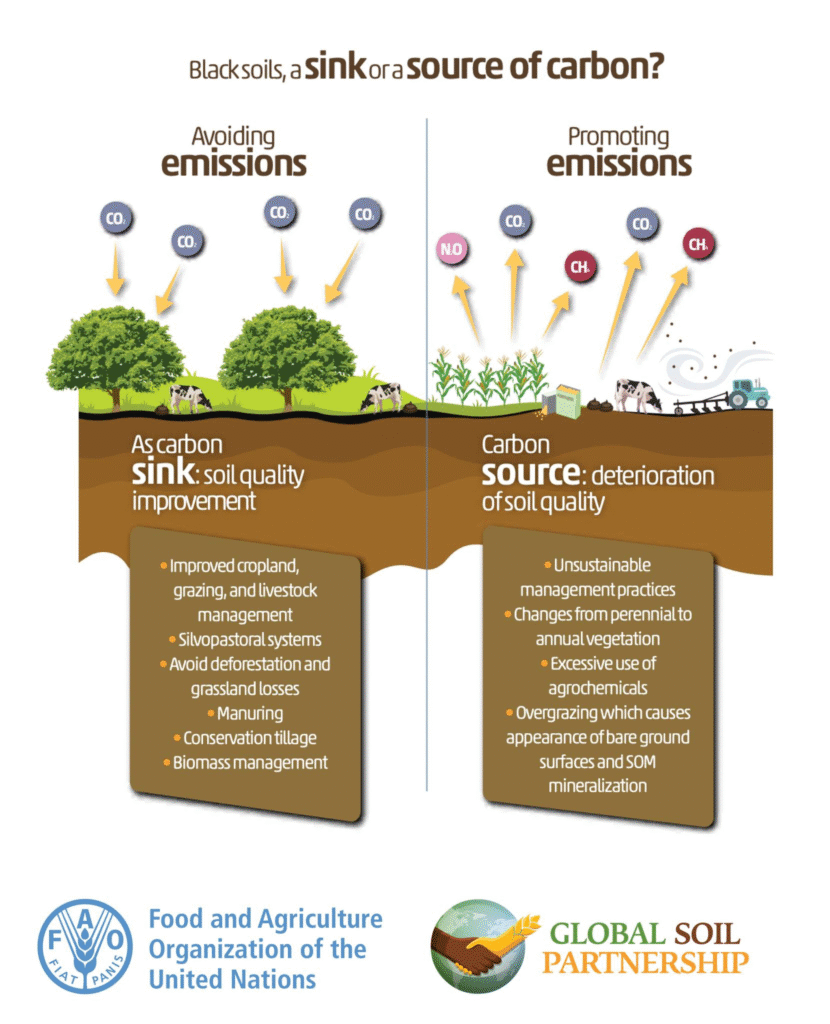Across the world’s farms, a quiet revolution is gathering pace – not in tractors or seeds, but in the soil itself. Beneath every field lies one of the planet’s most powerful carbon capture systems. The challenge has always been how to measure it, verify it, and reward those who nurture it. That’s where satellite-connected sensors are poised to transform the economics of farming and carbon sequestration alike.

For decades, the science of carbon farming has been constrained by the limits of monitoring. It’s easy enough to plant trees, but proving how much CO₂ a field absorbs – or how much stays locked away – is another matter entirely. Enter a new era of low-cost, satellite-connected sensors that can be scattered across landscapes, capturing the invisible data streams that define our planetary balance sheet: soil moisture, pH, respiration, nutrient flux, and weathering rates.
At the heart of this story is Enhanced Rock Weathering (ERW) – a natural, geochemical process that can remove gigatonnes of carbon from the atmosphere. By spreading finely ground basalt or olivine across farmland, farmers accelerate the natural reaction between silicate minerals, CO₂, and water. The outcome: stable bicarbonates that wash harmlessly into rivers and oceans, where they store carbon for millennia. It’s nature’s own carbon capture technology, scaled by human ingenuity.
But the success of ERW depends on measurement – and that’s where satellite IoT becomes indispensable. Imagine a distributed network of sensors buried in fields across Ghana, Yorkshire, or Mato Grosso, each one measuring changes in soil chemistry, CO₂ efflux, and mineral reactivity. These devices, powered by small solar cells and connected directly via low-power satellite links, send data daily to a shared cloud dashboard. With every data packet, the farmer’s field becomes a quantified carbon asset – traceable, verifiable, and tradable.
The implications are extraordinary. Through precise monitoring, farmers could begin to earn carbon credits not by guesswork but by data. Every tonne of verified CO₂ sequestered could translate into a new revenue stream. Smallholders in Africa or Brazil could join global carbon markets with the same transparency and trust as industrial operators in Europe or the US. By combining enhanced weathering, enhanced plant productivity (EPP), and improved soil structure (via reduced sodium levels, or ESP), farmers could simultaneously regenerate their soils and profit from their stewardship.
Satellite IoT makes this possible not by increasing the complexity of farming, but by reducing it. Devices become self-sufficient, maintenance-free, and globally connected. A handful of well-placed sensors can represent hundreds of hectares, calibrated by satellite observation and AI-driven models that estimate carbon flux and mineral dissolution. This is digitised soil intelligence — continuous, affordable, and universally accessible.
Are there any sensors for monitoring carbon sequestration in agriculture?
Carbon sequestration sensing in agriculture is advancing fast, but it’s still more “rapid measurement + modeling” than a cheap always-on soil probe. Today the most mature “sensor-like” approaches for soil organic carbon (SOC) are proximal spectroscopic tools—visible/near-infrared and increasingly mid-infrared – used in situ or on cores to estimate SOC quickly, often with ML calibration against lab combustion tests; these are now common in pilots and some commercial MRV workflows because they cut cost and time per sample dramatically.

Alongside that, a growing services ecosystem (e.g., carbon project developers and measurement companies) is packaging field sampling and handheld/portable spectroscopy and analytics into scalable verification offers, sometimes fused with satellite and farm-management data rather than relying on a single “carbon sensor.”
True continuous, buried SOC sensors remain largely experimental: researchers are exploring biosensors and dielectric/biological proxies (respiration, microbial activity) and gas-flux suites, but these measure drivers or correlates of sequestration more than SOC stock itself, so they’re not yet credit-grade on their own. This will be big when it arrives. Stay tuned here for updates on new developments as they emerge.
The practical bottlenecks are well known – SOC changes slowly, is spatially variable, and depends on soil type and moisture – so even the best field sensors need frequent local calibration and statistically robust sampling designs to satisfy carbon-market MRV rules. Net-net: we’re in a transition phase where “sensing” is real and improving (especially spectroscopy + AI), but continuous low-cost soil-embedded carbon sensors aren’t mainstream yet; the winning near-term pattern is hybrid MRV that blends rapid field measurements with models and remote sensing to get reliable, auditable sequestration estimates at scale.
The convergence of Earth observation, edge sensing, satellite connectivity and carbon accounting may define the next great agricultural transformation. Instead of extracting value from the land, farmers become custodians of its invisible wealth. Carbon becomes a crop – harvested not by ploughs, but by data.
And as this network grows – a planetary mesh of connected fields and weathering rocks — the business case strengthens. Verified carbon data becomes a new class of tradable asset, driving financing for regenerative practices, insurance models tied to sequestration performance, and localised sustainability credits. The same IoT backbone that today powers irrigation alerts and yield maps could tomorrow underpin a global carbon economy, connecting Ghanaian banana growers, British arable farms, and Brazilian cattle pastures in a shared digital marketplace of carbon-positive production.
In the end, the most powerful tool in the fight against climate change may not be a vast new technology, but a billion tiny sensors whispering to satellites – proving, hectare by hectare, that the Earth can heal itself, and that farmers can profit from that healing.